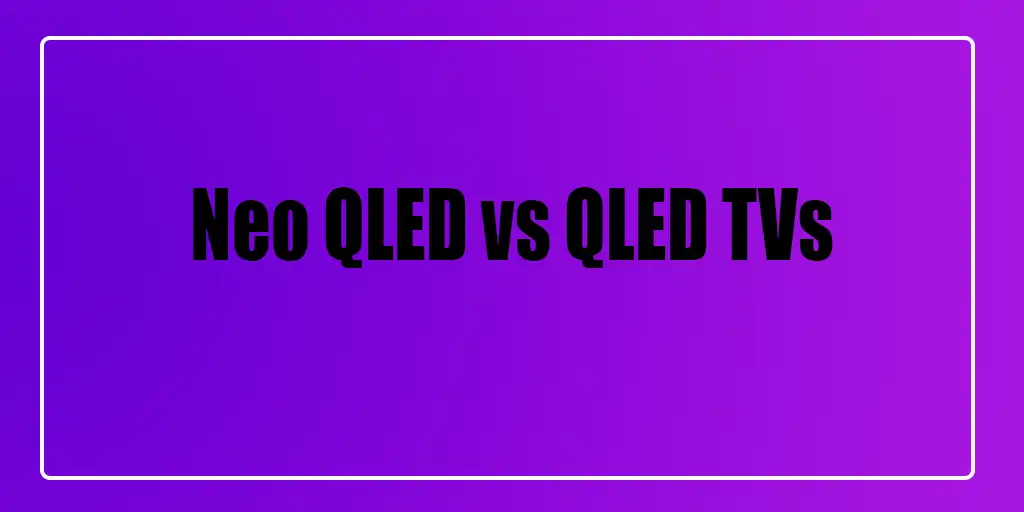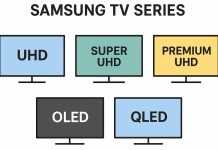When comparing Samsung Neo QLED and QLED TVs, it’s essential to understand their technology and performance differences. While both series share the QLED name, they cater to different segments, with QLED TVs positioned as mid-range models and Neo QLED TVs representing the premium tier.
Display Technology
Both TV series use LED screens with quantum dots, but the differences are significant. QLED TVs typically support a 60Hz refresh rate, with some models offering 120Hz, and use 8-bit panels enhanced with FRC technology to simulate a wider range of colors. These TVs are available with EDGE or Direct LED backlighting.
In contrast, Neo QLED TVs feature 120Hz refresh rates across the board and utilize true 10-bit panels, delivering authentic HDR performance. They are equipped with Direct Mini-LED backlighting, which uses thousands of tiny LEDs to control dimming zones more precisely and significantly improve contrast.
Performance and Positioning
QLED TVs range from budget to mid-tier, such as the Q60 series, which offers a basic experience comparable to Samsung’s Crystal TVs. However, the 8 series moves closer to the lower premium segment. Samsung uses several methods to differentiate between these series, such as limiting the OS features and adjusting the number of speakers. While these differences exist, they don’t significantly impact the overall usability of the TVs.
Samsung sources panels of varying quality for its TVs, ranging from low-cost to premium options. As a result, QLED TVs cannot deliver the same high-quality image as Neo QLED TVs, which justifies their higher price with superior performance and technology.






